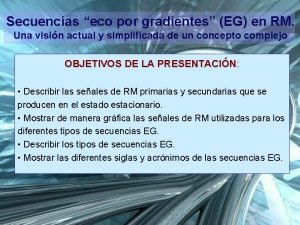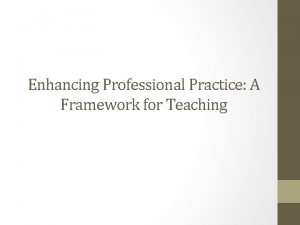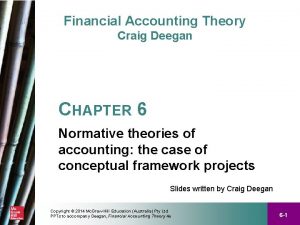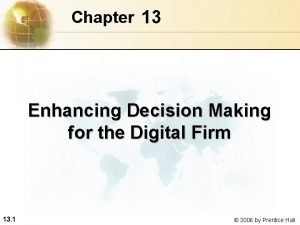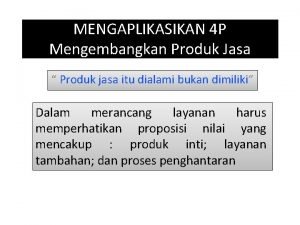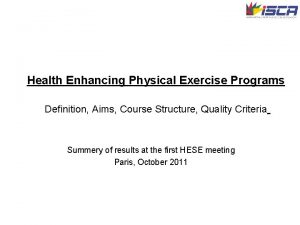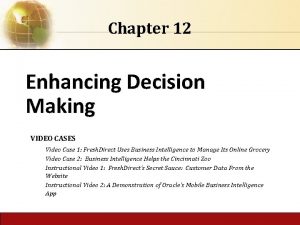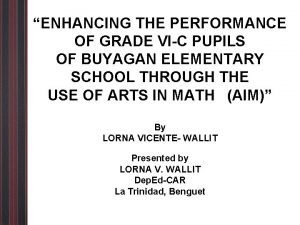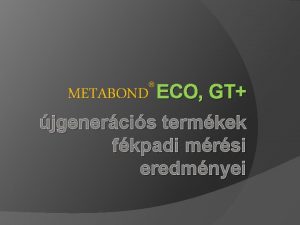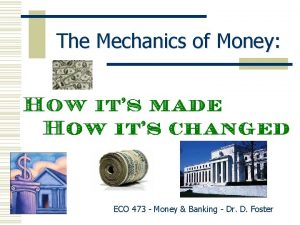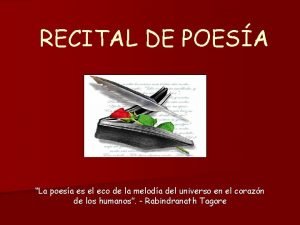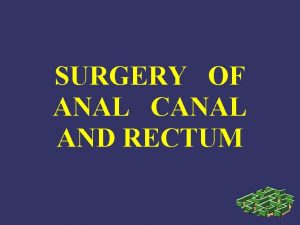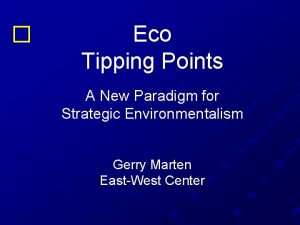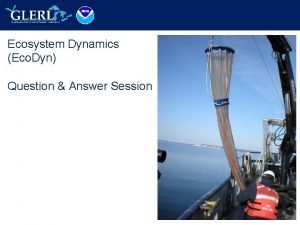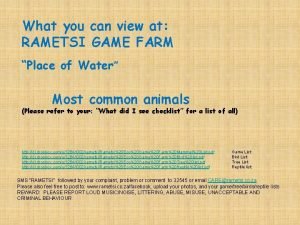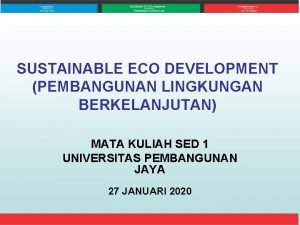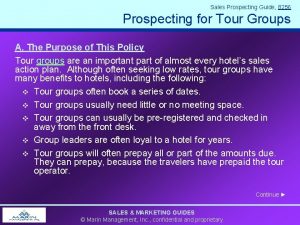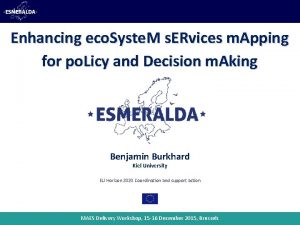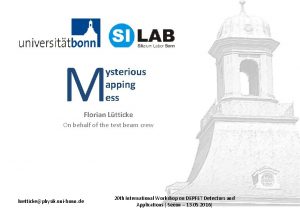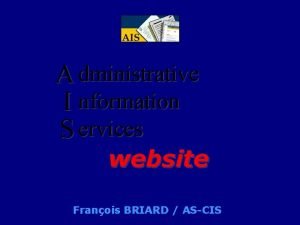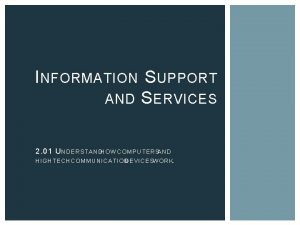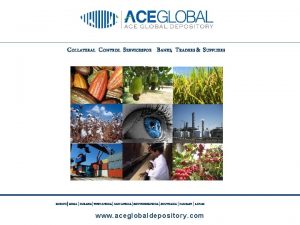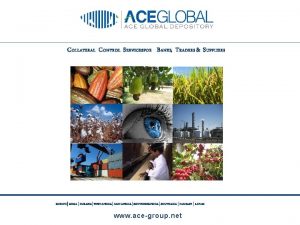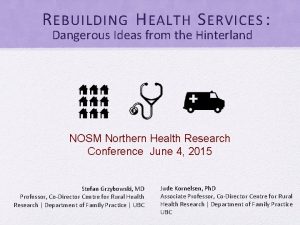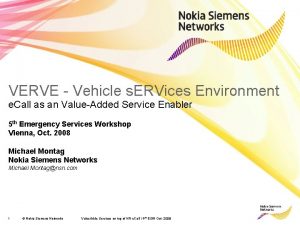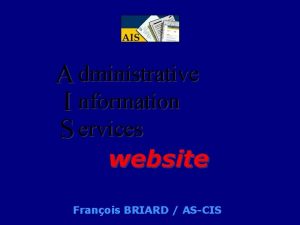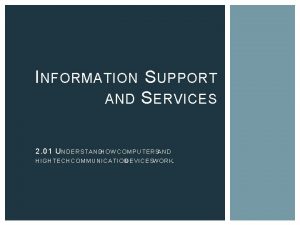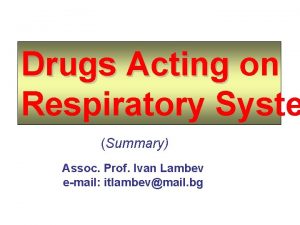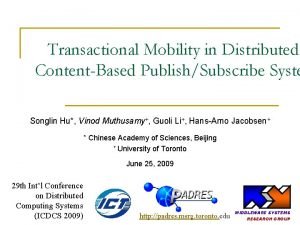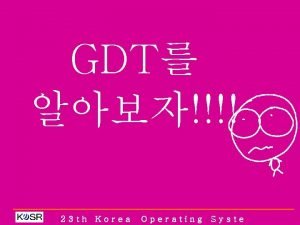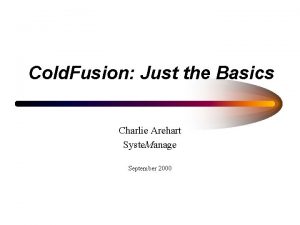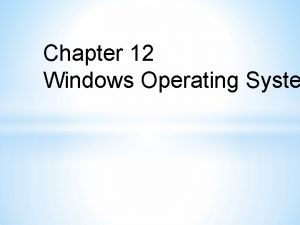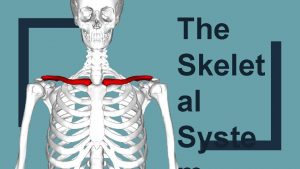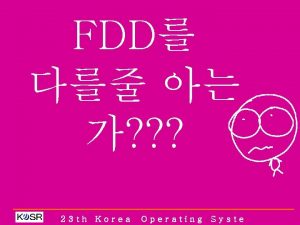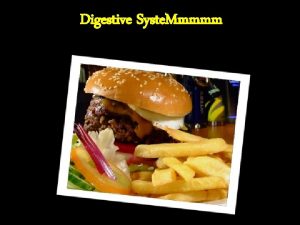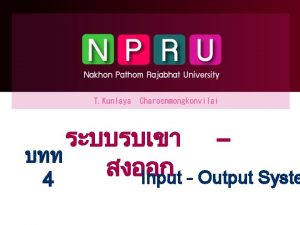Enhancing eco Syste M s ERvices m Apping

























- Slides: 25

Enhancing eco. Syste. M s. ERvices m. Apping for po. Licy and Decision m. Aking Benjamin Burkhard Kiel University EU Horizon 2020 Coordination and support action MAES Delivery Workshop, 15 -16 December 2015, Brussels

ESMERALDA background and targets ESMERALDA is a Support & Coordination Action to support EU member states in their tasks related to Biodiversity Strategy Target 2 Action 5 Builds on/co-operates with e. g. MAES, Open. NESS, OPERAs, MESEU, TRAIN ESMERALDA targets: Ecosystem Services (ES) mapping and assessment strategies for EU member states Deliver a ‘flexible methodology’ for pan-European, national and regional ES mapping and assessment Test this methodology in case studies across European regions and themes Mobilise all relevant actors from science, policy, practice and society involved in ES More information at: http: //esmeralda-project. eu/ MAES Delivery Workshop, 15 -16 December 2015, Brussels

ESMERALDA working phases 1 st phase: Identification of relevant stakeholders and stocktaking, collecting and linking existing approaches for ES mapping and assessment, creating links to existing related projects and databases; 2 nd phase: Development of the multi-tiered ES mapping and assessment methodology; MAES Delivery Workshop, 15 -16 December 2015, Brussels

Multi-tiered ES mapping and assessment methodology Ecosystem service “matrix” Geospatial units Expert estimations Other indicator data Empirical model results Ecosystem service maps Matrix model e. g. land use/cover map ES 1 ES 2 ES 3 ES 4 ES 5 LU 1 0 0 LU 2 2 1 4 2 1 LU 3 2 1 5 1 1 LU 4 1 1 0 3 1 LU 5 5 4 0 5 3 LU 6 2 1 0 5 1 ES supply or demand estimates ES 1 ES 2 ES 3 ES 4 NO RELEVANT SUPPLY 0 VERY LOW SUPPLY 1 LOW SUPPLY 2 MEDIUM SUPPLY 3 HIGH SUPPLY 4 VERY HIGH SUPPLY 5 ESm after Burkhard et al. (2009, 2012, 2014); Jacobs, Burkhard, Van Daele, Staes & Schneides (2015) – Ecological Modelling MAES Delivery Workshop, 15 -16 December 2015, Brussels

Multi-tiered ES mapping and assessment methodology Ecosystem service “matrix” Expert estimations Other indicator data Empirical model results l! a i c u r c e r a n icatio f i t n a u q d n a Identification MAES Delivery Workshop, 15 -16 December 2015, Brussels

Multi-tiered ES mapping and assessment methodology MAES Working group Mapping and Assessment of Ecosystems and their Services 1 st and 2 nd report (2013, 2014) http: //ec. europa. eu/environment/nature/knowledge/ecosystem_assessment/pdf/MAESWorking. Paper 2013. pdf http: //ec. europa. eu/environment/nature/knowledge/ecosystem_assessment/pdf/2 nd. MAESWorking. Paper. pdf Expert estimations Other indicator data Empirical model results Tiered approach for ES mapping Tier 1: rather simple, e. g. land cover-based Tier 2: more complex, e. g. statistics-based Tier 3: complex, e. g. model-based MAES Delivery Workshop, 15 -16 December 2015, Brussels

Multi-tiered ES mapping and assessment methodology EU in-depth report (2015) Expert estimations Other indicator data Empirical model results http: //ec. europa. eu/environment/integration/research/newsalert/ pdf/ecosystem_services_biodiversity_IR 11_en. pdf Tiered approach for ES mapping Tier 1: rather simple, e. g. land cover-based Tier 2: more complex, e. g. statistics-based Tier 3: complex, e. g. model-based MAES Delivery Workshop, 15 -16 December 2015, Brussels

Multi-tiered ES mapping and assessment methodology Tier 1: rather simple, e. g. land cover-based MAES Delivery Workshop, 15 -16 December 2015, Brussels

Multi-tiered ES mapping and assessment methodology n = 14; Kühnle (2014) Tier 1: rather simple, e. g. land cover-based MAES Delivery Workshop, 15 -16 December 2015, Brussels

Multi-tiered ES mapping and assessment methodology Tier 1: rather simple, e. g. land cover-based MAES Delivery Workshop, 15 -16 December 2015, Brussels

Multi-tiered ES mapping and assessment methodology n = 14; Kühnle (2014) Tier 1: rather simple, e. g. land cover-based MAES Delivery Workshop, 15 -16 December 2015, Brussels

Multi-tiered ES mapping and assessment methodology Case study Halle-Leipzig Burkhard, Kroll, Nedkov & Müller in Ecological Indicators (2012) Tier 2: more complex, e. g. statistics-based MAES Delivery Workshop, 15 -16 December 2015, Brussels

Multi-tiered ES mapping and assessment methodology Land cover data + soil data + climate data + hydrological data + statistics = Ecosystem service maps Population Community 123789 4567844 3457656 5798365 3456465 4564576 3456567 4657467 Case study Halle-Leipzig Burkhard, Kroll, Nedkov & Müller in Ecological Indicators (2012) Tier 2: more complex, e. g. statistics-based MAES Delivery Workshop, 15 -16 December 2015, Brussels

Multi-tiered ES mapping and assessment methodology -30 – -15 – 0 0 0 – 20 20 – 40 40 - 60 Case study Halle-Leipzig Provisioning ES “Food” supply and demand 2007 Kroll et al. (2010); Kroll et al. (2012) - Land Use Policy Tier 2: more complex, e. g. statistics-based MAES Delivery Workshop, 15 -16 December 2015, Brussels

Multi-tiered ES mapping and assessment methodology Case study Halle-Leipzig Provisioning ES “Water” supply and demand 2007 Kroll et al. (2010); Kroll et al. (2012) - Land Use Policy Tier 2: more complex, e. g. statistics-based MAES Delivery Workshop, 15 -16 December 2015, Brussels

Multi-tiered ES mapping and assessment methodology Case study Halle-Leipzig Provisioning ES “Energy” supply and demand 2007 Kroll et al. (2010); Kroll et al. (2012) - Land Use Policy Tier 2: more complex, e. g. statistics-based MAES Delivery Workshop, 15 -16 December 2015, Brussels

Multi-tiered ES mapping and assessment methodology Case study Halle-Leipzig Regulating ES “CO 2 -Fixation” supply and demand 2007 Kroll et al. (2010); Kroll et al. (2012) - Land Use Policy Tier 2: more complex, e. g. statistics-based MAES Delivery Workshop, 15 -16 December 2015, Brussels

Multi-tiered ES mapping and assessment methodology Case study Malki-Iskar, Bulgaria Tier 3: complex, e. g. model-based MAES Delivery Workshop, 15 -16 December 2015, Brussels

Multi-tiered ES mapping and assessment methodology Flood regulating ES Supply Case study Malki-Iskar, Bulgaria Nedkov & Burkhard in Ecological Indicators (2012) Modeling based on AGWA (KINEROS) tool Tier 3: complex, e. g. model-based MAES Delivery Workshop, 15 -16 December 2015, Brussels

MAES Guidelines Further guidelines from the MAES Working group Ecosystem type classification: corresponding to EUNIS and CORINE LC http: //projects. eionet. europa. eu/eea-ecosystem-assessments/library/draft-ecosystem-map-europe/ CICES: Common International Classification System for Ecosystem Services http: //cices. eu/ Conceptual guidelines Ecosystem service delivery chain: • ES potential (stock): hypothetical maximum (future) yield of an ES • ES flows: de facto used set of ES • Demand for ES: ES currently consumed or used in a particular area (not considering where ES actually are provided) after Burkhard et al. (2012): Mapping ecosystem services supply, demand budgets. – Ecological Indicators MAES Delivery Workshop, 15 -16 December 2015, Brussels

MAES Guidelines Framework for integrated ecosystem assessments from Maes et al. (2014): Mapping and Assessment of Ecosystems and their Services. Indicators for ecosystem assessments under Action 5 of the EU Biodiversity Strategy to 2020. . - Publications office of the European Union. MAES Delivery Workshop, 15 -16 December 2015, Brussels

ESMERALDA working phases 1 st phase: Identification of relevant stakeholders and stocktaking, collecting and linking existing approaches for ES mapping and assessment, creating links to existing related projects and databases; 2 nd phase: Development of the multi-tiered ES mapping and assessment methodology; 3 rd phase: Testing the developed methodology in representative thematic and biome-oriented Workshops and Case studies across EU member states; Case studies representative for: The variety of natural and socio-economic conditions in EU Member States The variety of cross-EU themes relevant for ES The geographical regions and biomes of the entire EU Potential for LIFE projects to get involved as case studies! MAES Delivery Workshop, 15 -16 December 2015, Brussels

ESMERALDA working phases 1 st phase: Identification of relevant stakeholders and stocktaking, collecting and linking existing approaches for ES mapping and assessment, creating links to existing related projects and databases; 2 nd phase: Development of the multi-tiered ES mapping and assessment methodology; 3 rd phase: Testing the developed methodology in representative thematic and biome-oriented Workshops and Case studies across EU member states; 4 th phase: Feedbacks from ESMERALDA stakeholders and other relevant user groups, methodology improvement; 5 th phase: Producing tailored and flexible solutions for ES mapping and assessment for policy and decision making; 6 th phase: Safeguarding the implementation of project results in the context of the BD Strategy and Horizon 2020, including strategies for long-term implementation beyond ESMERALDA MAES Delivery Workshop, 15 -16 December 2015, Brussels

Conclusions Choice of methods dependent on available resources, data and purpose Tier 1 may be used in data-scarce regions and/or as starting point Combination of Tiers 1 -3 can be used to triangulate and validate results A consistent framework and terminology are needed, considering ES potential, flow and demand as well as respective indicators and quantification methods MAES provides useful conceptual framework, practical recommendations and pilot studies It is recommended to follow established standards such as EU-wide MAES, CICES, CORINE data ESMERALDA can help with knowledge sharing and network support! MAES Delivery Workshop, 15 -16 December 2015, Brussels

Thank you for your attention! Contact: bburkhard@ecology. uni-kiel. de http: //esmeralda-project. eu/ This project receives funding from the European Union’s Horizon 2020 research and innovation programme under grant agreement No 642007. ECOSYSTEM SERVICES IN PRACTICE RESEARCH WORKSHOP, October 1 st 2015 LISBON
 Eco syste,
Eco syste, Secuencias eco gradiente
Secuencias eco gradiente Enhancing professional practice: a framework for teaching
Enhancing professional practice: a framework for teaching Enhancing personal effectiveness
Enhancing personal effectiveness Privacy-enhancing computation
Privacy-enhancing computation Four enhancing qualitative characteristics
Four enhancing qualitative characteristics Enhancing decision making
Enhancing decision making Contoh pengembangan produk jasa
Contoh pengembangan produk jasa Health enhancing definition
Health enhancing definition Explain property enhancing operations
Explain property enhancing operations Enhancing professional practice
Enhancing professional practice History of performance enhancing drugs
History of performance enhancing drugs Enhancing thermal conductivity of fluids with nanoparticles
Enhancing thermal conductivity of fluids with nanoparticles Enhancing decision making
Enhancing decision making Text box formatting
Text box formatting Danielson framework components
Danielson framework components Enhancing the performance of grade vi-c
Enhancing the performance of grade vi-c Metabond eco
Metabond eco Eco mechanics
Eco mechanics Poesa
Poesa Anatomy of anal canal
Anatomy of anal canal Eco tipping point
Eco tipping point Eco dyn
Eco dyn Rametsi eco game farm
Rametsi eco game farm Eco development adalah
Eco development adalah Eco prospecting
Eco prospecting

